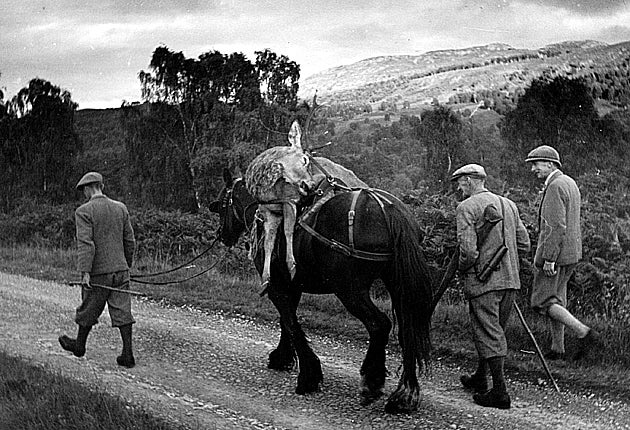Plan for 'deer ranches' in Scotland

Your support helps us to tell the story
From reproductive rights to climate change to Big Tech, The Independent is on the ground when the story is developing. Whether it's investigating the financials of Elon Musk's pro-Trump PAC or producing our latest documentary, 'The A Word', which shines a light on the American women fighting for reproductive rights, we know how important it is to parse out the facts from the messaging.
At such a critical moment in US history, we need reporters on the ground. Your donation allows us to keep sending journalists to speak to both sides of the story.
The Independent is trusted by Americans across the entire political spectrum. And unlike many other quality news outlets, we choose not to lock Americans out of our reporting and analysis with paywalls. We believe quality journalism should be available to everyone, paid for by those who can afford it.
Your support makes all the difference.Plans are being laid to create a network of vast deer ranches in the glens and hills of Scotland to cater for the nation’s appetite for venison, once more commonly associated with historical banquets but now finding its way into shopping baskets as a low-fat, eco-meat.
More than 20 farmers have held talks with Scotland’s biggest producer of venison about converting marginal land which may once have been used for sheep grazing into large-scale extensive deer farming.
Driving the expansion of deer farming – tiny compared with the number of wild animals culled for the table – is the public’s increasing taste for the meat, with sales rising by a third in just three years from £32m in 2006 to £43m in 2009, according to the latest report by Mintel, in July
Sales have been bouyed by venison’s low-fat, low cholesterol properties and perceived environmental and animal welfare benefits there are no deer battery farms; the animals are farmed mostly outdoors with little interference, giving them a reasonably natural life before they are shot at under two and a half years.
However the rising demand has left the industry with a shortfall and producers are having to rely on imports from New Zealand to supplement the 65,000 to 80,000 wild deer culled annually in Scotland, which far outnumber the few thousand animals coming from Scotland’s 25 small-scale farms.
With the blessing of the Scottish government but not yet any financial support, Highland Game, the UK’s biggest supplier of venison, is thinking big... and is hoping to encourage dozens of new farms within a generation.
Since Christian Nissen, Highland Game’s owner and managing director, who first made the call on Eat Venison Day last month, says between 20 and 50 farmers have contacted him to explore the prospect of converting their land.
At present his company, which supplies steaks, burgers and sausages to Asda, Morrisons, Tesco, Sainsbury’s and Waitrose, is forced to import 15,000 deer carcasses annually from New Zealand.
“We are really experiencing the type of demand for the product that we cannot keep up with,” Mr Nissen told The Independent.
“We have had that problem for quite some time, because of seasonality and because there’s not enough raw material. As a result we have to import from New Zealand, and it’s not our aim to be an importer when we can produce this ourselves in the UK.”
A deer working group established by the Scottish Government is seeking funds for a feasibility study on the expansion of the industry.
“There is an opportunity there because quite a lot of hill farms no longer have sheep because the economics of sheep farming have deteriorated, so there’s a certain amount of land that could be available,” said Richard Cooke, general manager of the 55,000-acre Dalhousie Estate in Augus in north-eastern Scotland, who is on the working group.
Ranches could be 500 acres, he explained, but added that farmers have to build two-metre perimeter fences and might also have to buy stock, which would entail significant start-up costs.
An estimated 500,000 to one million wild deer live in Scotland but their numbers have declined by between 10 and 20 per cent in a decade due to human encroachment and management, meaning that the wild stock cannot produce enough for human consumption.
While wild red, roe, fallow and sikha deer are all shot for meat, although most farmed deer is Red deer.
The Scottish deer management industry is important to our economy contributing about £105m each year.
Market research suggests it could be greatly expanded; only 8 per cent of the population have tried venison, mostly because they don’t know anything about it or don’t know where to buy it.
One of the industry’s major pitches is health: a research project sponsored by Defra and the Scottish Government, among others, found that venison muscle had lower amounts of saturated and mono-unsaturated fats and higher amounts of polyunsaturated fat than other meats, such as lamb or beef.
Join our commenting forum
Join thought-provoking conversations, follow other Independent readers and see their replies
Comments